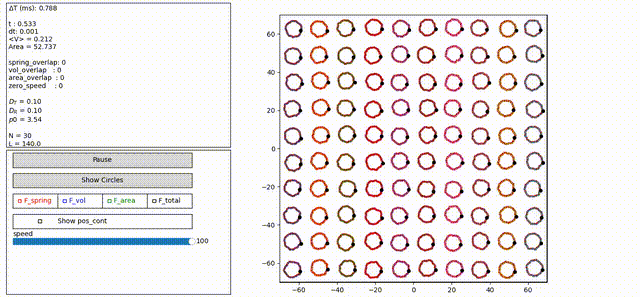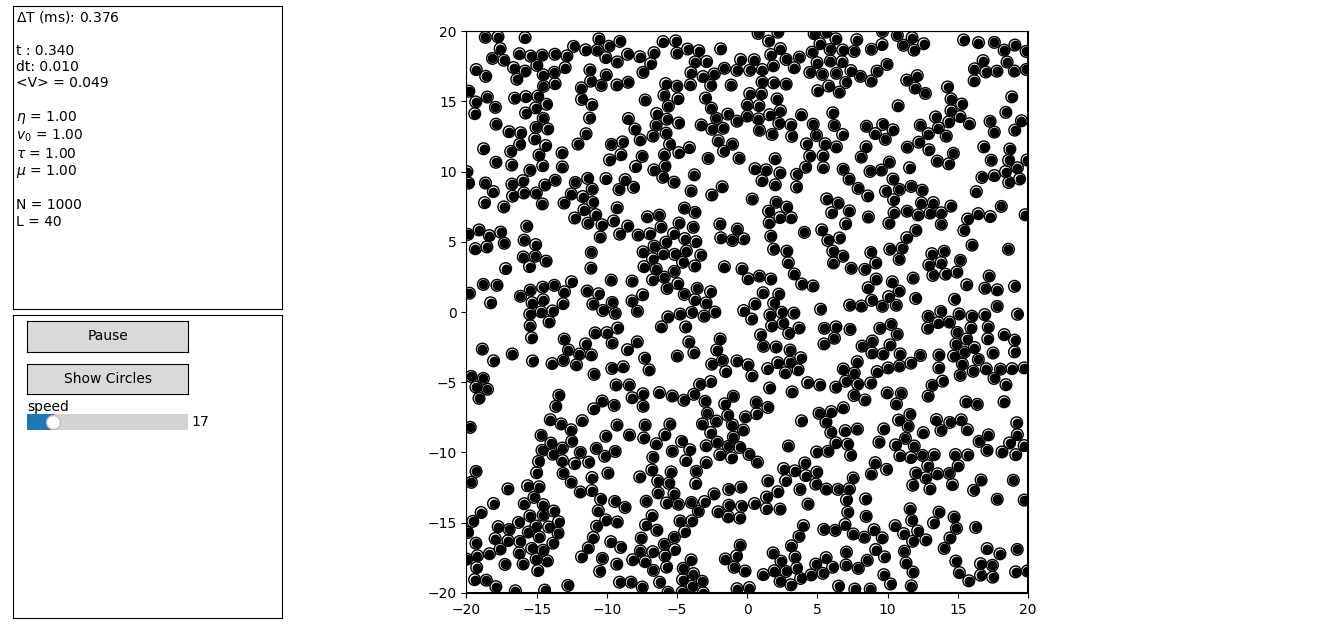How to use the physical systems already implemented with phystem?
The sub-package phystem.systems contains the physical systems already implemented with phystem.
In general, to use them, you need to create an instance of Simulation, which is located in the simulation.py module of the respective system, and run the run method. Simulation requires the following configurations:
creator_cfg: Settings for creating the initial configuration of the system.dynamic_cfg: Settings for the system’s dynamics.space_cfg: Settings for the physical space where the system is located.run_cfg: Settings for the execution mode.
Items 1, 2, and 3 are located in the configs.py module of the respective system, so you can check this file to understand how to instantiate these configurations.
Item 4 can be found in two locations:
- If the system uses the default execution settings, they are located in
phystem.core.run_config. - If the system has extended these settings, they are located in the
run_config.pymodule of the respective system.
⚠️
- If you are using a system that relies on the C++ module (ring and szabo), you need to compile the code that generates this module. For more information, refer to Compiling the C++ Module.
Currently, the following systems are implemented:
Ring
Implementation of multiple active rings, with some minor modifications, as presented by Teixeira et al. [1].

Szabo
Implementation of the active particle model proposed by Szabó et al. [2].

Vicsek
Implementation of the model proposed by Vicsek et al. [3].
⚠️
The implementation is incomplete and currently contains only a highly disorganized version of its solver.
Random Walker
System implemented in the tutorial How to use phystem?.
Referências
[1] TEIXEIRA, E. F.; FERNANDES, H. C. M.; BRUNNET, L. G. A single active ring model with velocity self-alignment. Soft Matter, v. 17, n. 24, p. 5991–6000, 23 jun. 2021.
[2] SZABÓ, B. et al. Phase transition in the collective migration of tissue cells: experiment and model. Physical Review. E, Statistical, Nonlinear, and Soft Matter Physics, v. 74, n. 6 Pt 1, p. 061908, dez. 2006.
[3] VICSEK, T. et al. Novel type of phase transition in a system of self-driven particles. Physical Review Letters, v. 75, n. 6, p. 1226–1229, 7 ago. 1995.